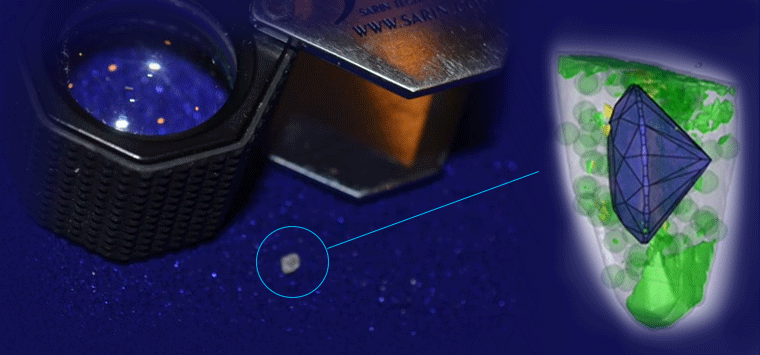When people think of diamonds, they like to think big. Every celebrity engagement is drowning in news items about the size of the diamond. Not to mention diamonds such as the 146-carat Koh-i-Noor, one of the largest in the world, steeped in mystique and part of the British Crown Jewels since Queen Victoria’s reign.
Although large diamonds get a lot of attention, most consumers are not in the market for the types of diamonds worn by celebrities and royals. With jewelry trends such as halo rings and pave style settings, small diamonds constitute a very healthy part of the global diamond market.
In fact, the smaller diamonds segment is the only segment of the market that is significantly growing, and demand for smaller diamonds continues to rise worldwide. As a result, many manufacturers are moving into small diamond production, and Sarine is adapting its proven diamond planning and manufacturing technologies specially to the small diamond segment.
Small Diamonds: A Technology Overview
In adapting its technologies for small diamonds, Sarine has divided this segment in two parts: smaller diamonds between 40-89 points, and the smallest diamonds from 1-40 points. Sarine’s small diamond devices include the following:
- Galaxy® Meteor, for inclusion mapping of smaller diamonds
- Galaxy® Meteorite for inclusion mapping of the smallest diamonds
- DiaExpert® Nano XL for planning and marking of smaller diamonds
- DiaExpert® Atom for planning and marking of the smallest diamonds
Small diamonds are relatively cheap. Depending on various aspects, such as clarity, carat size and more, small diamonds cost as little as $5 to $10. If a diamond manufacturer spends 30 minutes planning and marking a $5 rough diamond, then the cost of the production process becomes higher than the value of the diamond itself. In short, it is no longer cost effective.
Sarine’s small diamond technologies are designed to automate the planning of rough diamonds, making it more efficient and profitable.
Galaxy Meteor and Galaxy Meteorite, in conjunction with Sarine Advisor® 7 rough planning software, convert rough diamond planning and production into an automatic process, removing the need to have a human diamond planner present at all times.
It automates the hundreds of steps it takes to plan and produce a small polished diamond, thereby increasing accuracy and reducing human error, enabling the manufacturer to reach a level of quality in small diamonds that is impossible with manual labor.
This ultimately increases productivity, which boosts the value of the small diamonds.
Small Diamond Manufacturing with Sarine: The Numbers
The Galaxy Meteorite system can produce 250 small diamonds a day.
By reducing the time it takes to manufacture small diamonds, the process becomes profitable. It has been shown that implementation of Galaxy Meteorite contributes to an increase in cash flow from 10% to 30%.
Let’s take a comparative look at the manual process versus Sarine’s automated process in terms of diamond quality:
With manual planning, 60% of the small diamonds produced were rated with clarity of VVS-VS (very very slight or very slight inclusions). With the automated Meteorite/Advisor process, 80% of those same diamonds were graded as VVS-VS. The small diamonds graded as SI reduced from 30% to 15%, and I1-I3 reduced from 10% to 5%.
Samarth Diamond: A Case Study
Recently, Sarine began working with Indian diamond manufacturer, Samarth Diamond, a company specializing in the smaller diamond segment of rough stones under 40 points (.4 carats). Samarth now operates 130 work stations with 68 Sarine small diamond planning and marking devices.
With the help of Sarine devices, Samarth succeeded in reducing the percentage of small stones receiving a lower SI grade. This enables the company to produce more small diamonds at a higher quality, which increases the value of their diamonds.
Working with Sarine small diamond technologies, Samarth has achieved higher quality and productivity in its smaller diamond manufacturing results.
Small diamond planning technology is the latest breakthrough in an industry hungry for high quality polished diamonds in smaller sizes. It’s a story of advanced technology capable of scanning and accurately analyzing the tiniest diamonds, a feat that was unimaginable, even just a few years ago. And it’s all about technology adding value for diamond manufacturers, helping them achieve profits where they never could before.
After all, who could have dreamed that a 0.01-point diamond could be produced at the highest quality?






-1.jpg?width=310&name=blog_image%20(003)-1.jpg)





